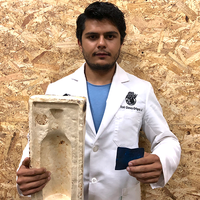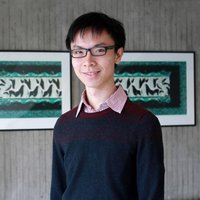Metamaterials
are a group of man-made materials engineered to have special properties not usually found in natural
materials, for example, a negative refractive index. Through the precise arrangement of micro-scale
structures in repeating patterns, metamaterials can lead to amazing inventions.
One of the most attractive applications
pertaining to metamaterial
is the invisibility cloak, which can hide
objects from light waves. However, as a theoretical acoustician, Yun Jing
focuses on a less fancy but more practical application of metamaterials: making
the world a quieter place.
Jing
established his fame in the fields of building and medical acoustics during his
Ph.D. and postdoc years in Rensselaer Polytechnic Institute and Harvard Medical
School. In 2011, Jing began his career at North Carolina State University as an
assistant professor. He was fascinated by the underlying physics of acoustic
metamaterials and decided to delve into it.
Needless
to say, noise control is essential to our modern life. From airports to city
streets to side-by-side residential buildings, almost everything around us can
be a potential source of noise and therefore a hazard to health. Conventional
noise insulation materials, such as acoustic foams, are generally not efficient
enough, especially at low frequencies. They are also deficient in mechanics, which
is crucial to various applications like airplanes and automobiles.
In
2015, a breakthrough technology arose from Jing’s lab. He and his colleagues
invented a noise control metamaterial that is simultaneously lightweight,
strong, and efficiently sound-proof for the first time. The secret lies in a
special structure – Jing added a thin layer of membrane inside the core
of the widely used honeycomb cell structure, making this affordable material capable of bringing down noise by a factor of 1,000. This invention showed
great potential to be used in airplanes, trains, cars, and conference rooms.
Later, Jing further improved the material by
removing the very same layer of membrane. Specially designed holes in different
sizes were added into the honeycomb cell structure and demonstrated near-perfect sound
absorption across a broad-band of wave frequencies. This improvement not only
further decreased the density of the material by around 5%, but also eliminated
a major hurdle for mass production. In less than 5 years, Jing estimates, this
revolutionary metamaterial will be ready for the market.




